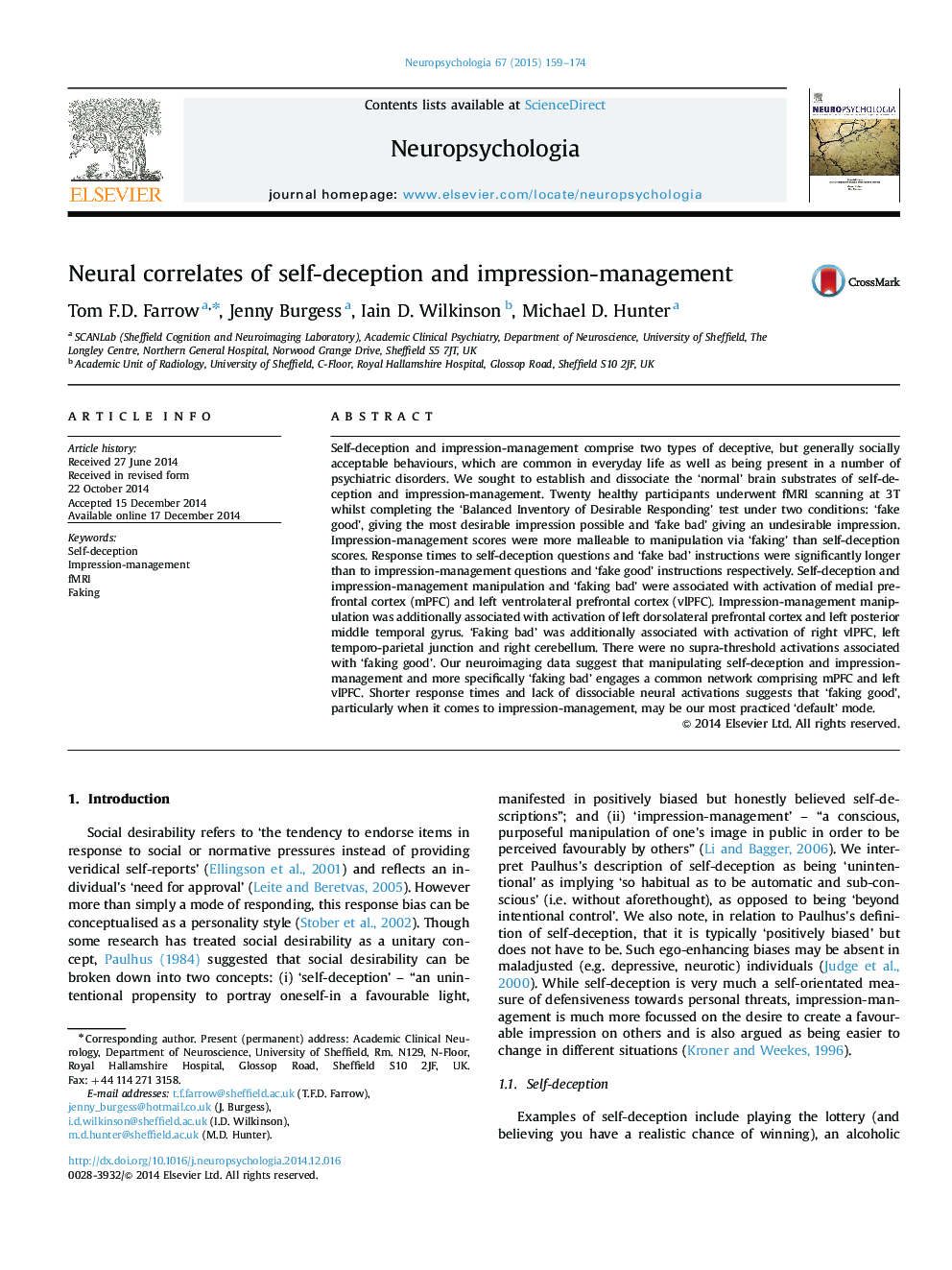| کد مقاله | کد نشریه | سال انتشار | مقاله انگلیسی | نسخه تمام متن |
|---|---|---|---|---|
| 7320575 | 1475586 | 2015 | 16 صفحه PDF | دانلود رایگان |
عنوان انگلیسی مقاله ISI
Neural correlates of self-deception and impression-management
ترجمه فارسی عنوان
همبستگی عصبی از خودکفایی و ادراک مدیریت
دانلود مقاله + سفارش ترجمه
دانلود مقاله ISI انگلیسی
رایگان برای ایرانیان
موضوعات مرتبط
علوم زیستی و بیوفناوری
علم عصب شناسی
علوم اعصاب رفتاری
چکیده انگلیسی
Self-deception and impression-management comprise two types of deceptive, but generally socially acceptable behaviours, which are common in everyday life as well as being present in a number of psychiatric disorders. We sought to establish and dissociate the 'normal' brain substrates of self-deception and impression-management. Twenty healthy participants underwent fMRI scanning at 3T whilst completing the 'Balanced Inventory of Desirable Responding' test under two conditions: 'fake good', giving the most desirable impression possible and 'fake bad' giving an undesirable impression. Impression-management scores were more malleable to manipulation via 'faking' than self-deception scores. Response times to self-deception questions and 'fake bad' instructions were significantly longer than to impression-management questions and 'fake good' instructions respectively. Self-deception and impression-management manipulation and 'faking bad' were associated with activation of medial prefrontal cortex (mPFC) and left ventrolateral prefrontal cortex (vlPFC). Impression-management manipulation was additionally associated with activation of left dorsolateral prefrontal cortex and left posterior middle temporal gyrus. 'Faking bad' was additionally associated with activation of right vlPFC, left temporo-parietal junction and right cerebellum. There were no supra-threshold activations associated with 'faking good'. Our neuroimaging data suggest that manipulating self-deception and impression-management and more specifically 'faking bad' engages a common network comprising mPFC and left vlPFC. Shorter response times and lack of dissociable neural activations suggests that 'faking good', particularly when it comes to impression-management, may be our most practiced 'default' mode.
ناشر
Database: Elsevier - ScienceDirect (ساینس دایرکت)
Journal: Neuropsychologia - Volume 67, January 2015, Pages 159-174
Journal: Neuropsychologia - Volume 67, January 2015, Pages 159-174
نویسندگان
Tom F.D. Farrow, Jenny Burgess, Iain D. Wilkinson, Michael D. Hunter,
